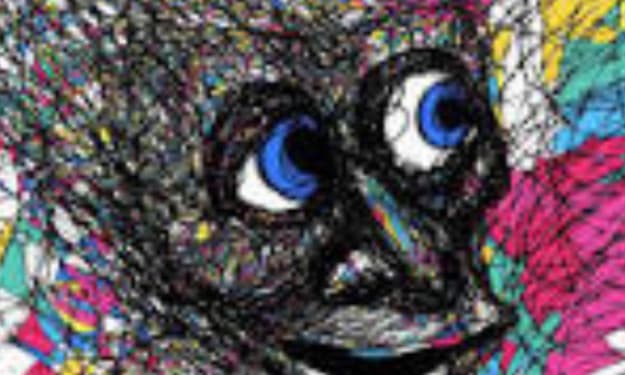Exploring the Cosmos Within :Astrology & History
A Journey Through Astrology and the Human Psyche

“I can only gaze with wonder and awe at the depths and heights of our psychic nature. Its non-spatial universe conceals an untold abundance of images which have accumulated over millions of years of living development and become fixed in the organism… And these images are not pale shadows, but tremendously powerful psychic factors… Beside this picture I would like to place the spectacle of the starry heavens at night, for the only equivalent of the universe within is the universe without.”
Our relationship with the stars is as ancient as humanity itself. For millennia, our ancestors have gazed upon the starry night sky in wonder and reverence. Evidence of early knowledge of the stars can be found in prehistoric caves, bone fragments, and megalithic structures, each whispering stories of our enduring fascination with the cosmos.
At approximately 12,000 years old, Göbekli Tepe stands as a testament to humanity's early fascination with celestial events. It contains the world’s oldest known megaliths, suggesting alignments with the movements of the stars far older than Stonehenge or the Great Pyramid of Giza. Across diverse ancient civilizations, from the Sumerians to the Egyptians, the stars held profound significance, serving as guides, markers of time, and sources of divine inspiration.
The Sumerians, among the earliest observers of the heavens, laid the groundwork for astrology, the study of the stars. Their observations, recorded on ancient tablets, formed the basis for Babylonian astrology, the first organized system of celestial interpretation. Astrology in Babylonia was not merely a study of the stars but a tool for understanding earthly events, with celestial phenomena believed to mirror terrestrial occurrences.
In Egypt, astrology intertwined with religious practices, as the movements of the stars dictated the timing of rituals and ceremonies. The decans, groups of fixed stars divided into segments, provided a celestial calendar for the ancient Egyptians, each associated with a divinity guiding earthly affairs.
With the conquests of Alexander the Great in the 4th century BC, Hellenistic astrology emerged, blending Babylonian, Egyptian, and Greek influences. This marked a shift towards natal astrology, focusing on the positions of celestial bodies at the time of an individual’s birth to discern their personality and destiny.
Electional astrology, another branch that emerged, sought auspicious moments for initiating events or activities. Through centuries of observation, ancient stargazers recognized the movements of planets, or “wandering stars,” weaving them into the fabric of myth and legend.
The classical period of the Greco-Romans saw the mapping of the zodiac, a celestial highway marked by twelve archetypal signs embodying instinctual images. Animals, symbols of primal forces, adorned the zodiac, reflecting the collective unconscious projected onto the heavens.
Astrology, far from a mere pseudoscience, was a mainstream tradition for much of human history, offering insights into both individual destinies and collective fates. However, with the dawn of the Scientific Revolution, astrology faced skepticism and condemnation from both science and religion, as the heliocentric model displaced the geocentric worldview.
Yet, astrology endured, evolving alongside psychology to explore the depths of the human psyche. Carl Jung, the Swiss psychiatrist and psychoanalyst, recognized the symbolic power of astrology, viewing the planets and zodiac as mirrors of archetypal forces shaping human experience.
In Jungian psychology, the journey through the planetary houses symbolizes the individuation process, the path towards wholeness. Mythic narratives intertwined with celestial patterns offer insights into the eternal themes of birth, death, and rebirth, echoing the hero’s journey found in ancient myths.
Astrology, in its symbolic language, provides a framework for understanding the complexities of human nature. From the archetypes embodied in the zodiac signs to the interplay of planetary energies, astrology offers a rich tapestry of symbols for interpreting the human experience.
As above, so below—the ancient dictum encapsulates the profound connection between the cosmos and the individual. Through astrology, we glimpse the eternal dance of archetypes, guiding us on our journey towards self-discovery and spiritual awakening.
In the labyrinth of the psyche, astrology serves as a guiding light, illuminating the hidden recesses of the soul. Though often misunderstood and maligned, astrology remains a beacon of wisdom, inviting us to explore the mysteries of the universe within.
**Unlocking the Mysteries of the Cosmos: Carl Jung's Astrological Odyssey**
Astrology, often dismissed as mere superstition, holds a profound significance for the renowned psychologist Carl Jung. To Jung, astrology represents the accumulated psychological wisdom of antiquity, a symbolic language that maps the depths of the human psyche onto the celestial sphere. In his exploration of astrology, Jung discovered not just a relic of ancient belief systems, but a powerful tool for understanding the unconscious forces that shape human behavior and experience.
At the heart of Jung's fascination with astrology lies its symbolic resonance with his theory of the collective unconscious. Just as alchemy provided a symbolic language for the transformation of the psyche, astrology offered Jung a means of deciphering the archetypal patterns that underlie human existence. For Jung, astrology was not about predicting the future based on the positions of the stars, but about uncovering the hidden dynamics of the psyche that are reflected in the movements of the heavens.
One key insight that Jung gleaned from astrology is the concept of synchronicity, or meaningful coincidences that cannot be explained by conventional causal relationships. Jung observed that certain astrological configurations seemed to coincide with significant events or psychological states, suggesting a deeper connection between the inner and outer worlds. This notion of synchronicity challenged traditional notions of causality and opened up new avenues for understanding the interconnectedness of all things.
Central to Jung's approach to astrology is the recognition that it is not the stars themselves that exert influence over human affairs, but rather the qualitative effects of time. Jung saw astrology as a symbolic portrait of the cyclical rhythms of existence, with the movements of the planets serving as markers of time's passage. In this view, astrology becomes a lens through which we can glimpse the deeper patterns and rhythms that shape our lives.
Jung's exploration of astrology also led him to reflect on the nature of fate and free will. While some astrologers embrace a fatalistic worldview, Jung saw astrology as a means of understanding the interplay between individual choice and the larger currents of destiny. For Jung, astrology offered a way of engaging with the mysteries of existence without surrendering to a passive acceptance of fate.
Despite its enduring popularity, astrology remains a subject of skepticism and controversy in the modern world. Yet for Jung, astrology represented a bridge between the rational and the mystical, a symbolic language that speaks to the deepest truths of the human experience. In embracing astrology, Jung invites us to consider the possibility that there are forces at work in the universe that transcend our understanding, and that by exploring these mysteries, we may gain new insights into ourselves and the world around us.
As we navigate the complexities of the modern world, Jung's insights into astrology offer a reminder of the enduring power of symbols and archetypes to illuminate the depths of the human psyche. Whether we view astrology as a science, an art, or simply a cultural artifact, its presence in our lives serves as a reminder of the profound interconnectedness of all things, and the mysteries that lie waiting to be explored in the cosmos and within ourselves.
About the Creator
Enjoyed the story? Support the Creator.
Subscribe for free to receive all their stories in your feed. You could also pledge your support or give them a one-off tip, letting them know you appreciate their work.






Comments
There are no comments for this story
Be the first to respond and start the conversation.